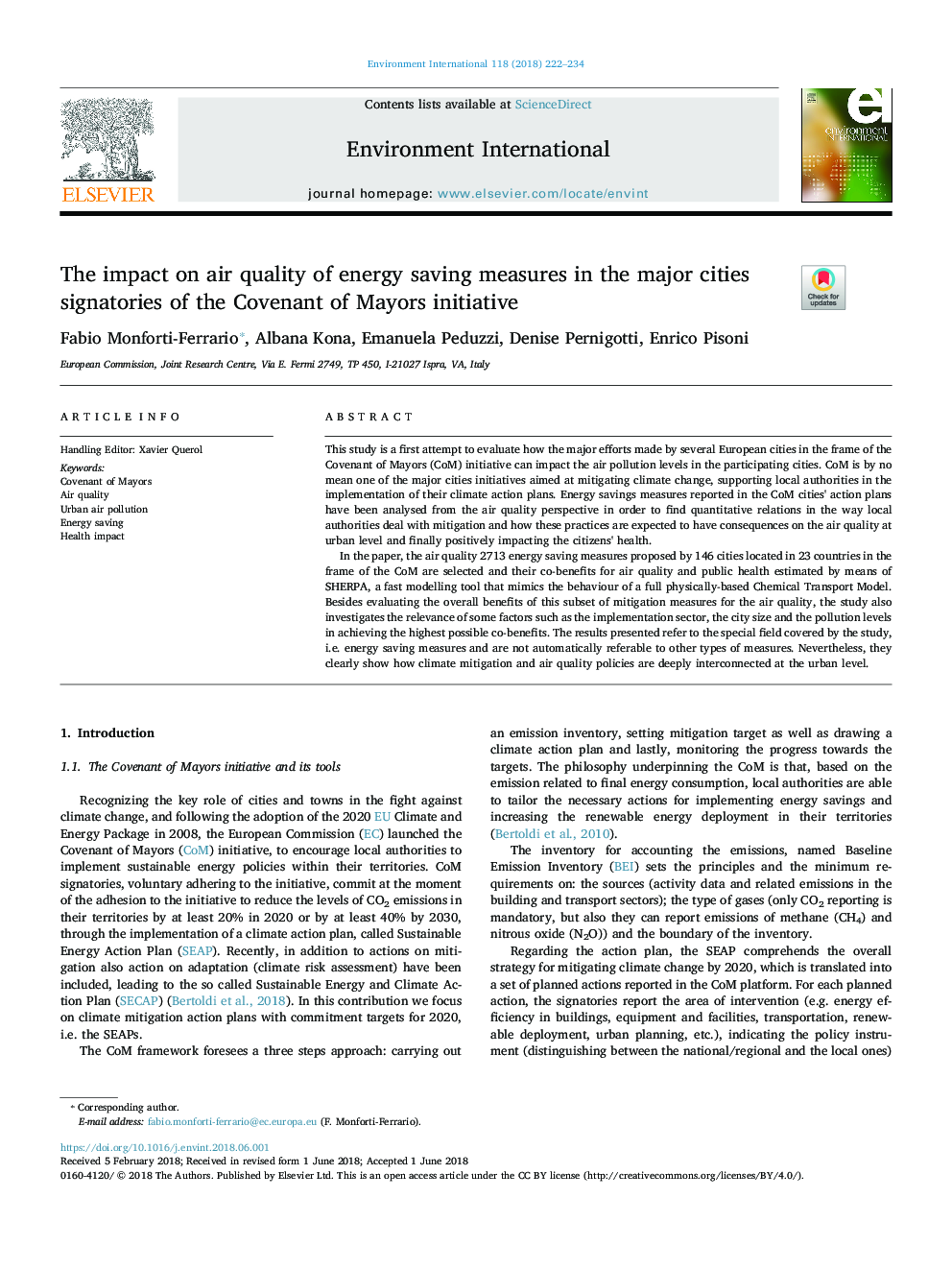| Article ID | Journal | Published Year | Pages | File Type |
|---|---|---|---|---|
| 8855113 | Environment International | 2018 | 13 Pages |
Abstract
In the paper, the air quality 2713 energy saving measures proposed by 146 cities located in 23 countries in the frame of the CoM are selected and their co-benefits for air quality and public health estimated by means of SHERPA, a fast modelling tool that mimics the behaviour of a full physically-based Chemical Transport Model. Besides evaluating the overall benefits of this subset of mitigation measures for the air quality, the study also investigates the relevance of some factors such as the implementation sector, the city size and the pollution levels in achieving the highest possible co-benefits. The results presented refer to the special field covered by the study, i.e. energy saving measures and are not automatically referable to other types of measures. Nevertheless, they clearly show how climate mitigation and air quality policies are deeply interconnected at the urban level.
Related Topics
Life Sciences
Environmental Science
Environmental Chemistry
Authors
Fabio Monforti-Ferrario, Albana Kona, Emanuela Peduzzi, Denise Pernigotti, Enrico Pisoni,
